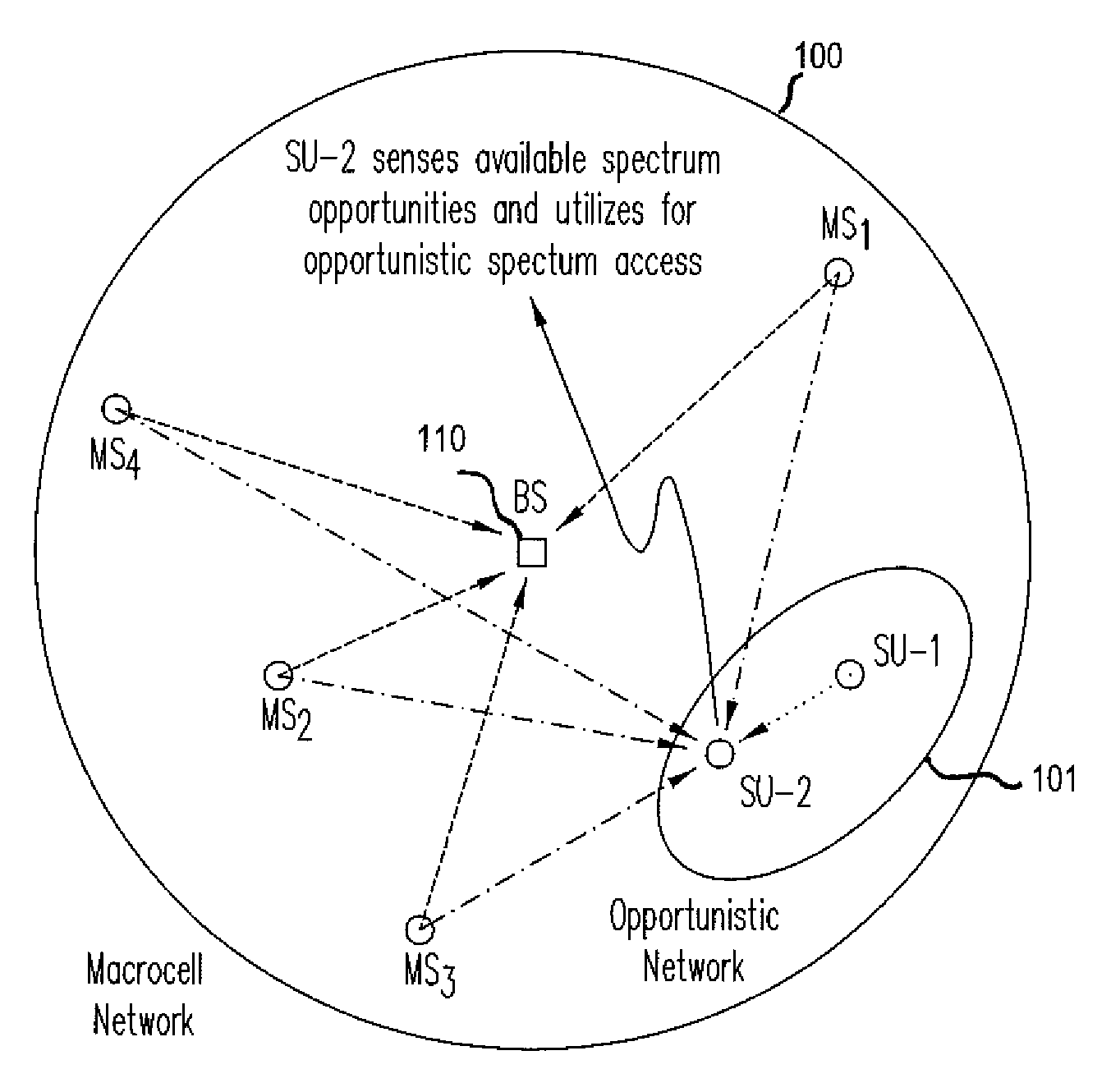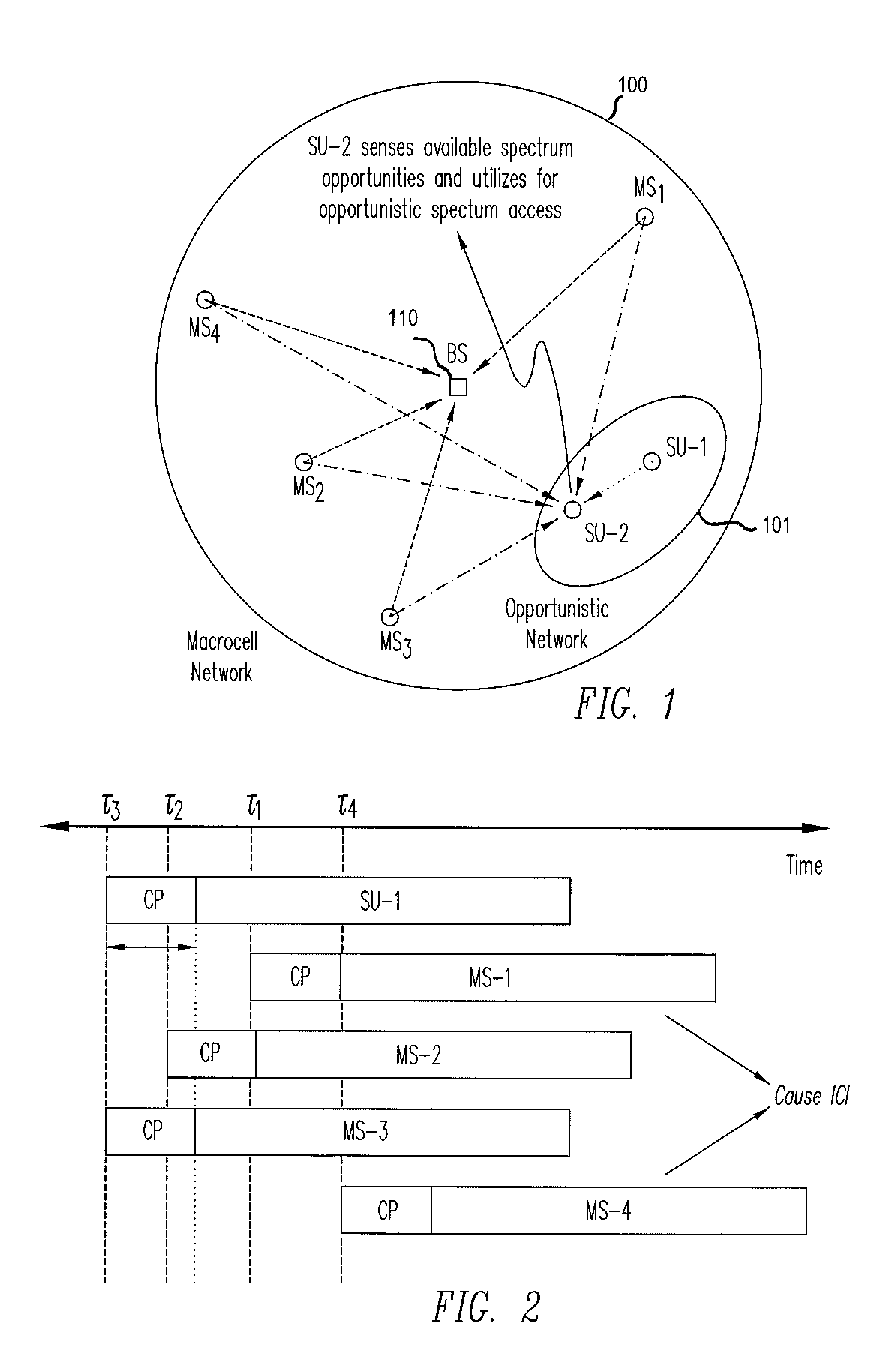Method for interference-minimizing resource block-size selection at a macrocell, a microcell and a femtocell
a microcell and resource block technology, applied in the field of wireless communication, can solve the problems of poor customer experience, low voice quality and cost of mobile telephone networks in indoor environments, and the inability of mobile telephone subscribers to truly be the only telephone they need, so as to avoid interference and waste spectrum resources
- Summary
- Abstract
- Description
- Claims
- Application Information
AI Technical Summary
Benefits of technology
Problems solved by technology
Method used
Image
Examples
Embodiment Construction
[0033]One potential problem in wireless systems is the crowding of the radio spectrum. The increasing number of different wireless technologies that may be used render the coexistence among systems in the same spectrum complex. Cognitive radio is a possible solution to the potential problem of radio spectrum crowding. At any given time, in conjunction with the OFDMA technology, a cognitive radio system can opportunistically utilize a spectrum (i.e., a range of subcarriers) that is not used by other users in the network. Such opportunistic use of unused spectrum requires either a priori knowledge of spectrum utilization, or the ability to reliably sense spectrum utilization. Failure to reliably sense spectrum utilization may lead to significant probabilities of false alarms (PFA) and misdetections (PMD). FIG. 1 shows a pnmary network (e.g., a macrocell network) having coverage area 100, in which one or more users SU-1 and SU-2 of opportunistic network 101—a secondary network—may accu...
PUM
 Login to View More
Login to View More Abstract
Description
Claims
Application Information
 Login to View More
Login to View More - R&D
- Intellectual Property
- Life Sciences
- Materials
- Tech Scout
- Unparalleled Data Quality
- Higher Quality Content
- 60% Fewer Hallucinations
Browse by: Latest US Patents, China's latest patents, Technical Efficacy Thesaurus, Application Domain, Technology Topic, Popular Technical Reports.
© 2025 PatSnap. All rights reserved.Legal|Privacy policy|Modern Slavery Act Transparency Statement|Sitemap|About US| Contact US: help@patsnap.com



